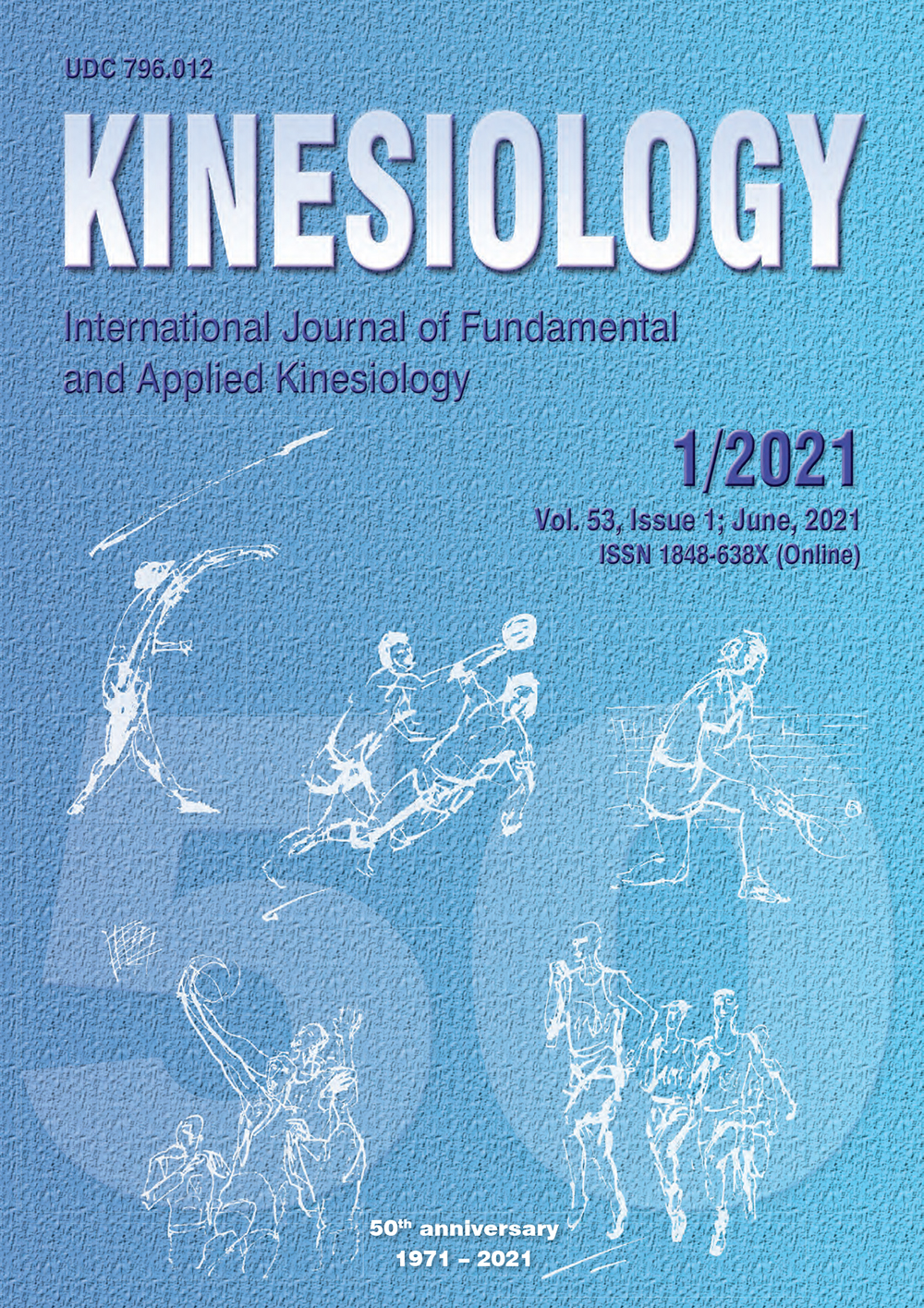Bilateral deficit: relationships with training history and functional performance
Abstract
The purpose of the study was to investigate the magnitude of bilateral deficit (BLD) in trained males and examine its relationship with functional performance and recent resistance training history. Ten physically active males (age: 23.02±1.27 years) self-reported the number of unilateral and bilateral exercises within their structured resistance training schedule. During two visits to the laboratory, participants performed unilateral and bilateral squat jumps (SJ) and isometric leg extensions (ILE) for the quantification of BLD. Participants also performed bilateral countermovement jumps (CMJ) and a change of direction (COD) test to quantify functional performance. The performance outcomes and information regarding training history were then correlated with the bilateral index (BLI) metric. The key findings were that: (a) a lower BLD in SJ peak power related to a greater CMJ peak force (r=.728; p=.02) and peak power (r=.750; p=.01), (b) the BLI in the ILE was unrelated to performance outcomes, and (c) BLI was unrelated to the mean number of bilateral and unilateral exercises in the structured resistance training programme of participants. In conclusion, lower levels of BLD may be advantageous for bilateral tests of functional performance (i.e. jumps) however there is a need to consider the mechanical similarity between the performance and BLD measure. Finally, the balance of unilateral and bilateral exercises in an individual’s recent resistance training history is not sensitive to the BLI measured during dynamic or isometric assessments.
Key words: unilateral, strength, jump, specificity
Downloads
Published
How to Cite
Issue
Section
License

This work is licensed under a Creative Commons Attribution-NonCommercial 4.0 International License.
At Faculty of Kinesiology we recognize that access to quality research is vital to the scientific community and beyond. Kinesiology is non-profit journal and all costs of publishing and peer review process are covered by the publisher itself or other funding sources like Ministry of Science and Education of the Republic of Croatia. Full text papers are also available free of charge at http://hrcak.srce.hr/kineziologija. There are no restrictions on self archiving of any form of paper (preprint, postprint and publisher's version).
Articles are distributed under the terms of the CC BY - NC 4.0
Kinesiology does not charge any fees to authors to submit or publish articles in our journal.


